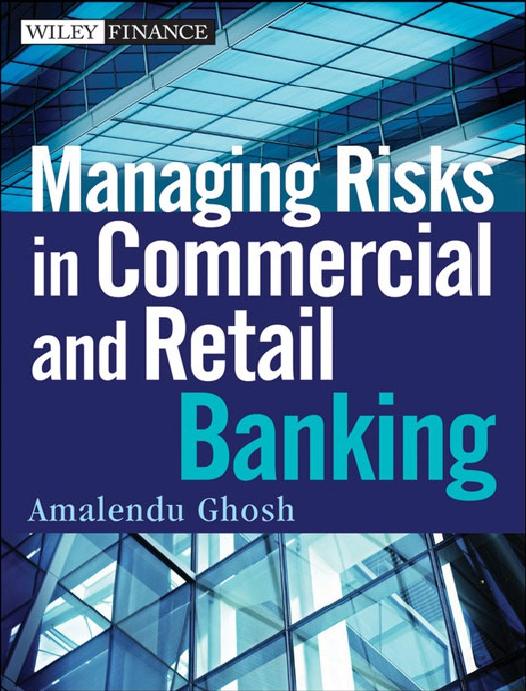Managing Risks in Commercial and Retail Banking by Amalendu Ghosh

Author:Amalendu Ghosh
Language: eng
Format: epub, pdf
ISBN: 9781118103562
Publisher: Wiley
Published: 2012-01-24T16:00:00+00:00
The first issue relates to the selection of criteria for deciding the portfolio composition. The commercial banks’ loans and advances are widely distributed among numerous clients, and their credit portfolio consists of a large number of revolving credits and term loans. Besides, within the broad manufacturing sector portfolio, there are subportfolios like steel sector, cement sector, chemicals sector, power sector, and petroleum sector portfolios. The bank has to consider whether it should evaluate the manufacturing sector portfolio as a whole or evaluate subportfolios. The first option is better because of similarities in borrower and facility characteristics between different subsectors and the evaluation parameters that will be applied may not materially vary between them. But the small and medium enterprises sector consists of thousands of credit exposures of heterogeneous nature; agricultural and allied agricultural sectors consist of huge numbers of loans for diverse purposes; and the personal loan sector comprises loans for residential housing, purchase of cars and consumer durables, equity share acquisition, higher education, and so on. In such situations, it is inappropriate to form broad portfolios by clubbing together a few subportfolios because of the lack of homogeneity in borrower characteristics and facility characteristics. It is better to form subportfolios like housing loan portfolio, car loan portfolio, consumer durables loan portfolio, agricultural loan portfolio, small industries portfolio, and evaluate them separately. But certain constraints arise in applying portfolio analysis techniques to these subportfolios, because the individual ratings of all borrowers in subportfolios will not be available to study the rating migration nor the risk-grade-wise data on probability of default, loss rate given default, and exposure at default to estimate potential losses and calculate risk-adjusted returns on subportfolios. It is difficult for the bank to compile these data on an individual borrower basis, because of the multiplicity of borrowers and huge number of small loans involved in the process. The bank can compile data on ratings and risk components (probability of default, PD; loss given default, LGD; and exposure at default, EAD) on an average basis for each subportfolio on a random sampling basis.
Eventually, the bank may classify credit portfolios into two categories—broad portfolios like infrastructure sector portfolio, manufacturing sector portfolio, trade sector portfolio, export sector portfolio, and relatively smaller portfolios in the retail sector. In respect to broad credit portfolios, the bank should build up borrower-wise rating data and risk-grade-wise data on probability of default, loss rate given default, and exposure at default, and study risk migration and variations in the quantum of potential losses associated with the portfolios over a period of time to assess the change in the portfolio quality. In evaluating the retail sector portfolios, the bank may compile the risk rating of a good number of individual borrowers in each group on a random sample basis to assess the overall quality of the subportfolio and the changes in quality over a period of time. The bank can construct the risk-grade-wise distribution of retail sector subportfolios based on risk rating and risk component (PD, LGD, and
Download
Managing Risks in Commercial and Retail Banking by Amalendu Ghosh.pdf
This site does not store any files on its server. We only index and link to content provided by other sites. Please contact the content providers to delete copyright contents if any and email us, we'll remove relevant links or contents immediately.
The Secrets of Successful Financial Planning by Dan Gallagher(1467)
A Knight's Reward by Catherine Kean(1297)
An American Sickness by Elisabeth Rosenthal(1218)
Against the Gods by Peter L. Bernstein(1072)
America's Bitter Pill: Money, Politics, Backroom Deals, and the Fight to Fix Our Broken Healthcare System by Steven Brill(1042)
FREAKONOMICS by levitt steven d(1035)
SuperFreakonomics by Steven D. Levitt(1031)
America's Bitter Pill by Steven Brill(1011)
Risk Management Framework by James Broad(1000)
Strategic Risk Taking: A Framework for Risk Management by Aswath Damodaran(983)
A Practical Introduction to Security and Risk Management by Bruce Oliver Newsome(980)
2019 Social Security & Medicare Facts by Michael D. Thomas(980)
Game Changers by Rudolf Taschner(945)
How Our Days Became Numbered: Risk and the Rise of the Statistical Individual by Dan Bouk(929)
The New Frontier Investors by Jagdeep Singh Bachher Adam D. Dixon & Ashby H. B. Monk(920)
The 8 Characteristics of the Awesome Adjuster by Carl van Lamsweerde(903)
SUPERFREAKONOMICS by levitt steven d(898)
The Globetrotter's Guide to Travel Insurance: Travel Smarter, Pay Less, Get the Right Coverge (The Savvy Traveler Series Book 1) by Bauche Michael & Bauche Yvonne(886)
The Advisor Playbook: Regain Liberation and Order in your Personal and Professional Life by Duncan MacPherson & Chris Jeppesen(866)
